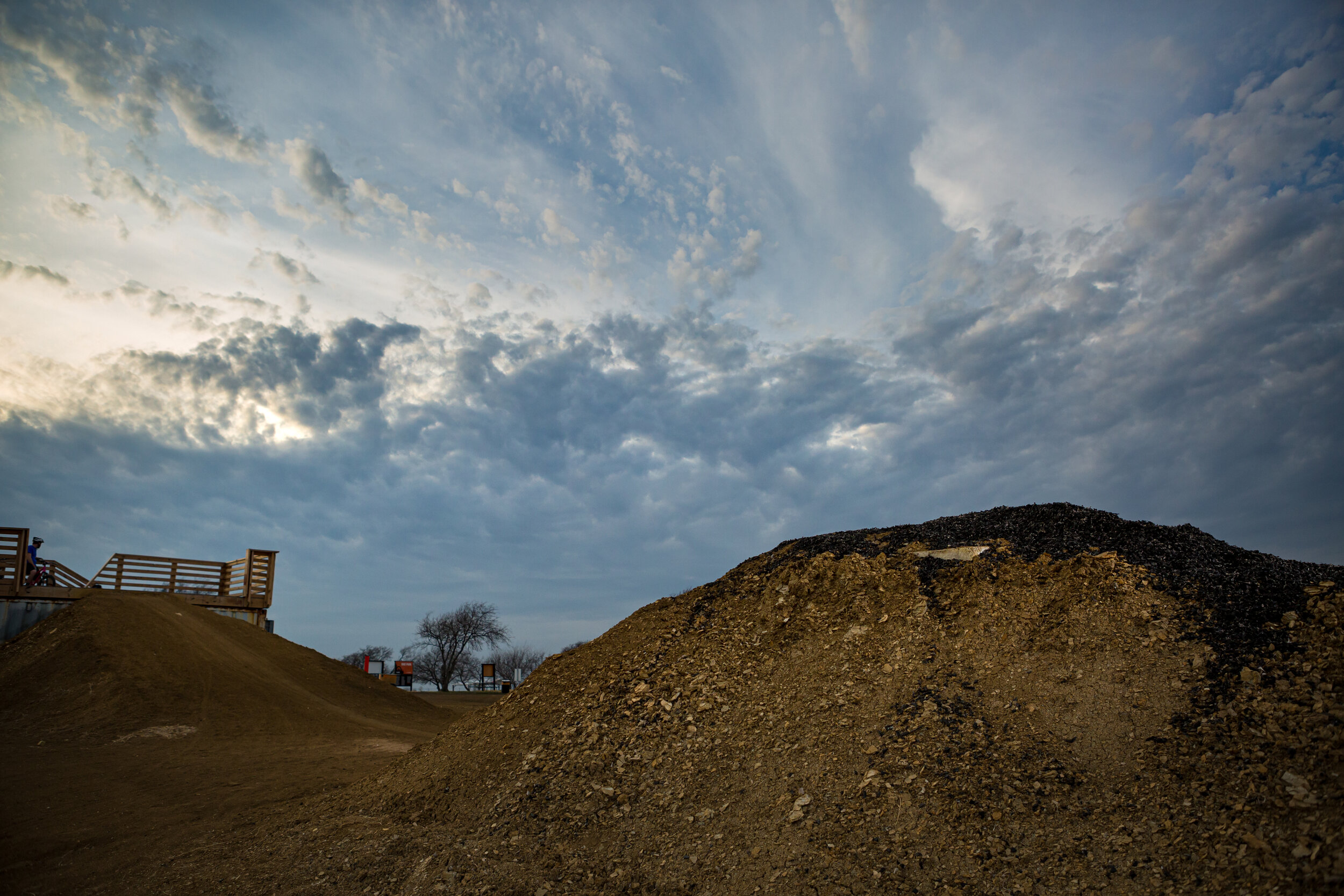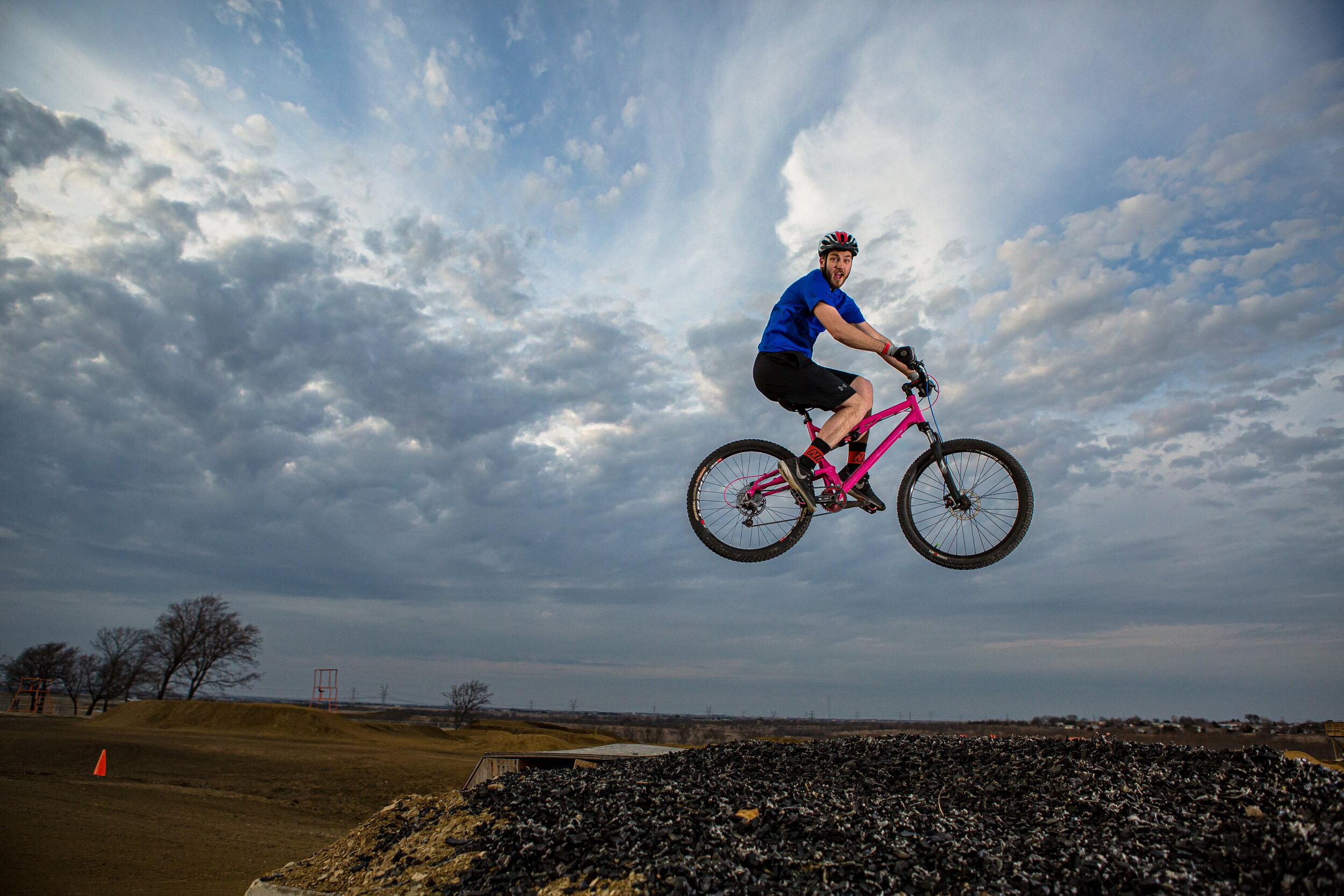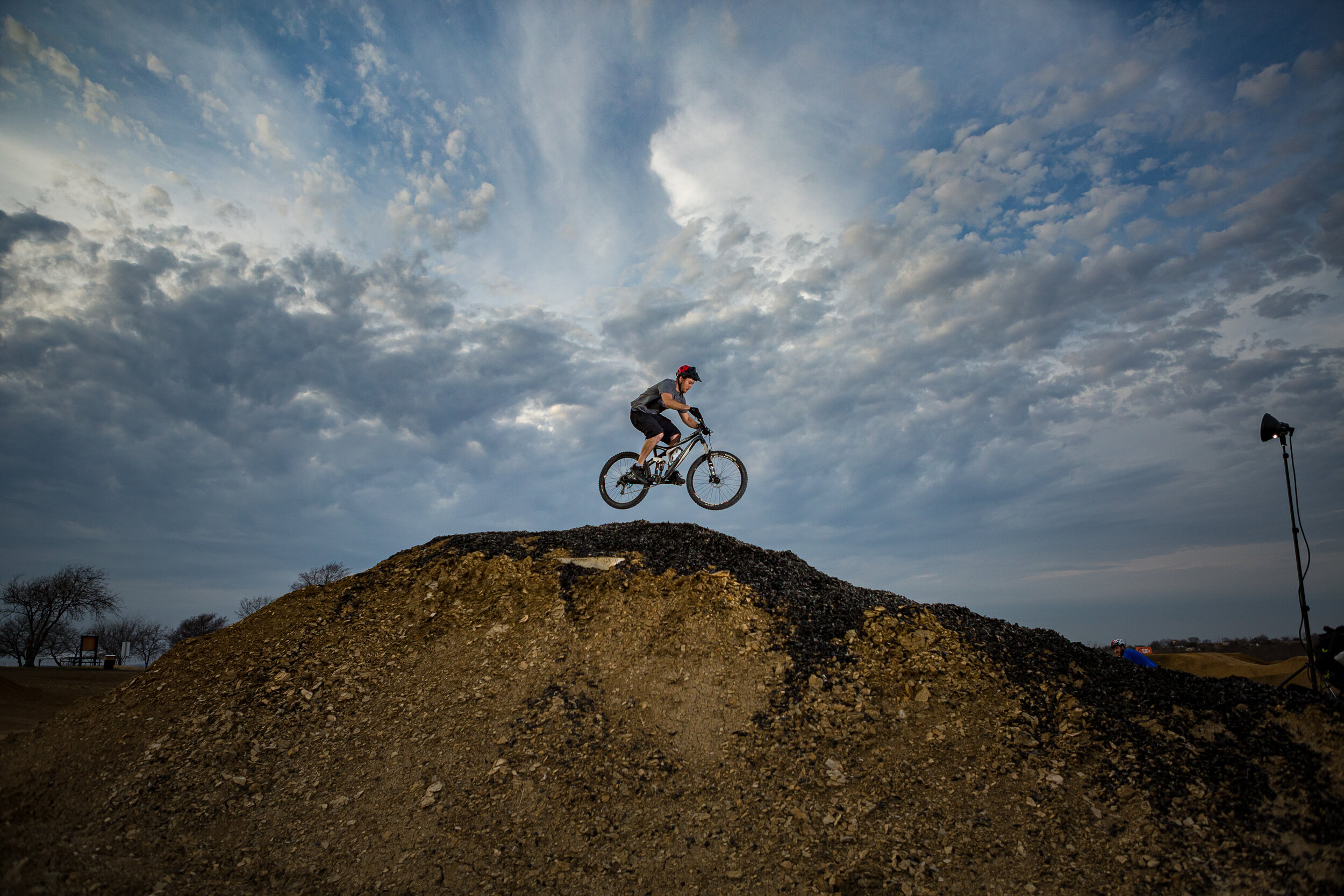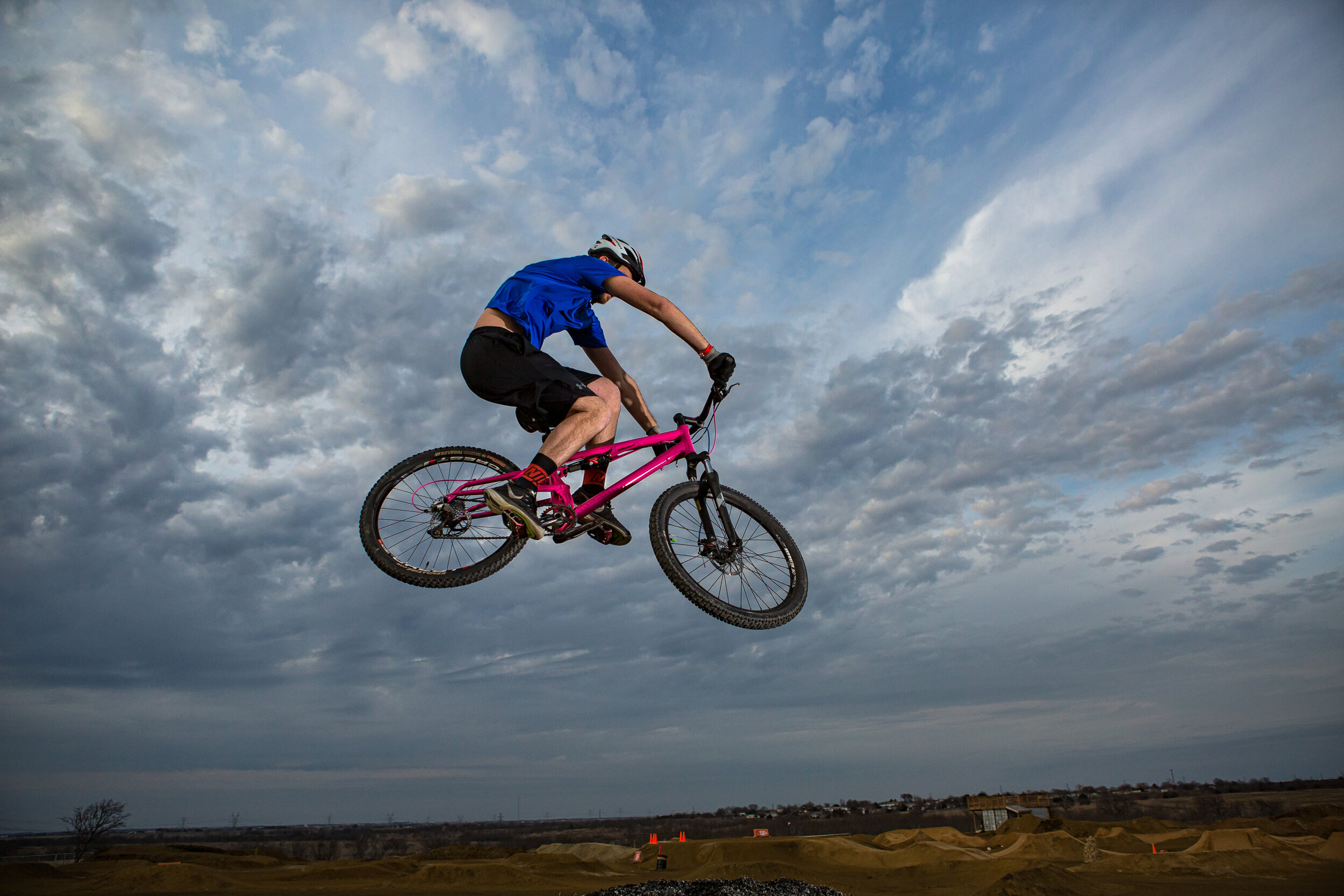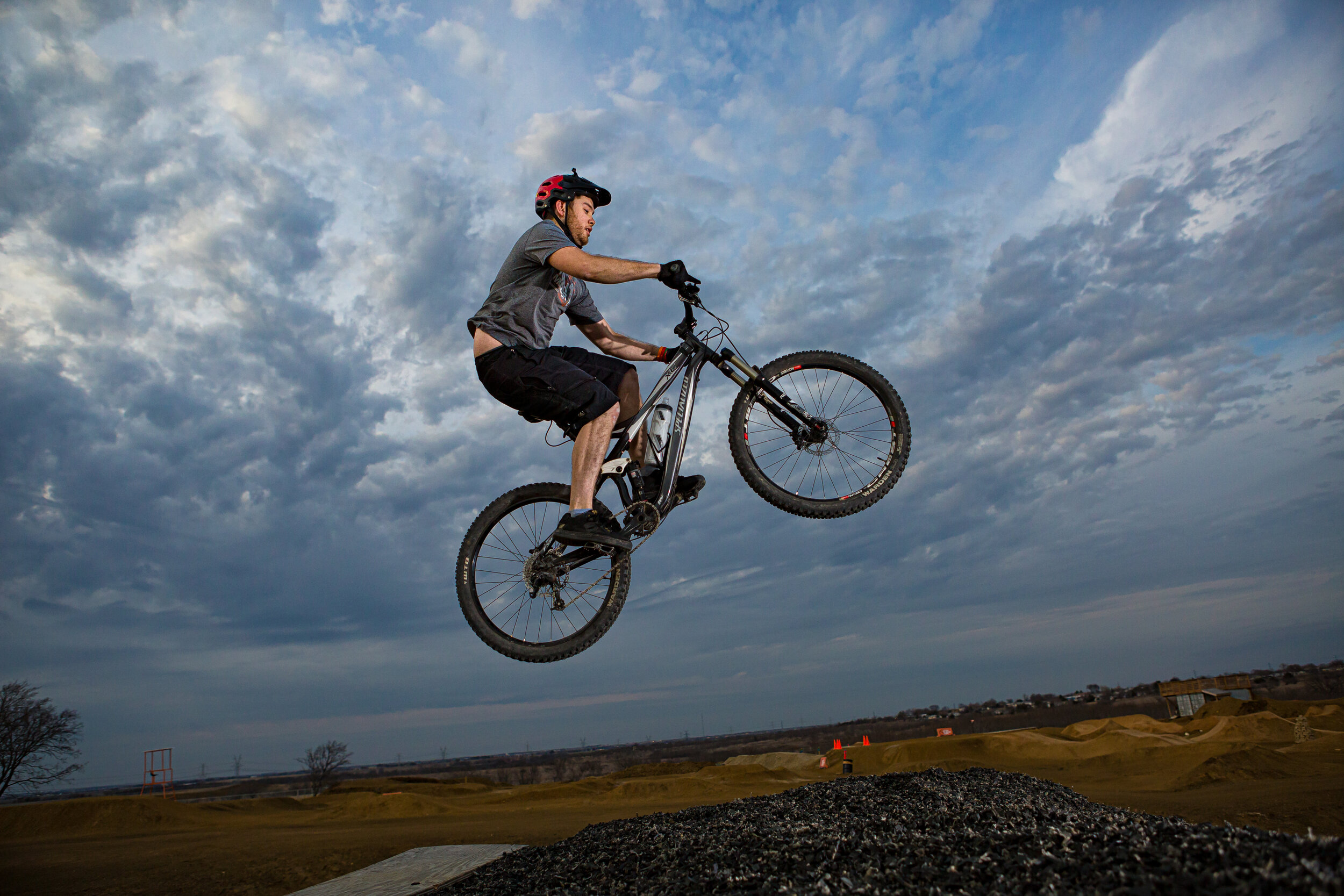This was my first day ever on location with the new ELB 400 HS to go kit from Elinchrom back in mid-February in 2018. The kit comes with a single light head, battery pack, and reflector. I was completely surprised by the size and easy mobility I had with the kit. I went out and purchased a camera hiking bag since I was riding a mountain bike to get to the locations. I took only what I needed and what I physically was capable of carrying on my back.
Here's a shot with everything packed up inside my bag. I was really happy with the quality of the backpack (and price). I purchased the bag through Amazon, a link provided here. I really wanted something that could fit a camera, 2-3 lenses, a light stand, tripod, and my ELB 400 HS light kit while having the ability to be mobile on a bike or future hiking trips. I was even able to pack gels and a few extra things.
Today we went to TexPlex Park and tried out some of their jumps for test shots. Here are some photos taken during the day to evening with camera and lighting specifications!
ELINCHROM ELB 400: 424J, Power set at 6.0 (highest setting)
Camera: Canon 5D Mark III
Camera settings: ISO 640 24MM (24-70MM) F/4.0 1/4000 sec
ELINCHROM ELB 400: 424J, Power set at 6.0 (highest setting)
Camera: Canon 5D Mark III
Camera settings: ISO 640 24MM (24-70MM) F/3.5 1/4000 sec
Initially I started out with lower settings in camera and then drastically bumped up my shutter extremely high to see how powerful not only my light could be but to obtain as much quality information in my foreground and back ground.
Some of my beginning photos were in difficult transition from deciding where to place my key light (ELB 400) in full sun and how to balance the light with the ambient light. The other challenge I faced was trying to make sure my subject was well lit under high speed/movement conditions and timing my shot just right (such as a mountain biker flying across my frame).
I had my talent/subject pose prior to some of my shots in order to make an educated guess on where they would ride across my frame. This was trial and error and numerous attempts.
During my shoot, since it was important for me to make sure I had as much information and detail in my shot, while shooting at f/3.5, I struggled with overall image exposure. However, I don’t mind shooting a little darker than I anticipate, especially since this is an outdoor environment with constant sunlight shifting. I’d rather preserve as much detail as possible than exposing too bright in my images and loosing skyline or highlight information.
Below are my examples of two test shots into the actual and edited shot of JT on his bike with some lighting adjustments.
As we started to lose sunlight, this made my key light source more prominent. This photo shoot took place back in mid-February. By the end of the evening, around 6:20pm, the ambient light, skyline, and natural colors of our environment were astonishingly beautiful. I couldn’t of asked for a more beautiful evening.
I bumped up my camera from ISO 400 to ISO 640, playing around between f/3.5-4 and shutter at 4000. I stayed within these setting for the rest of the evening and got some amazing shots.
